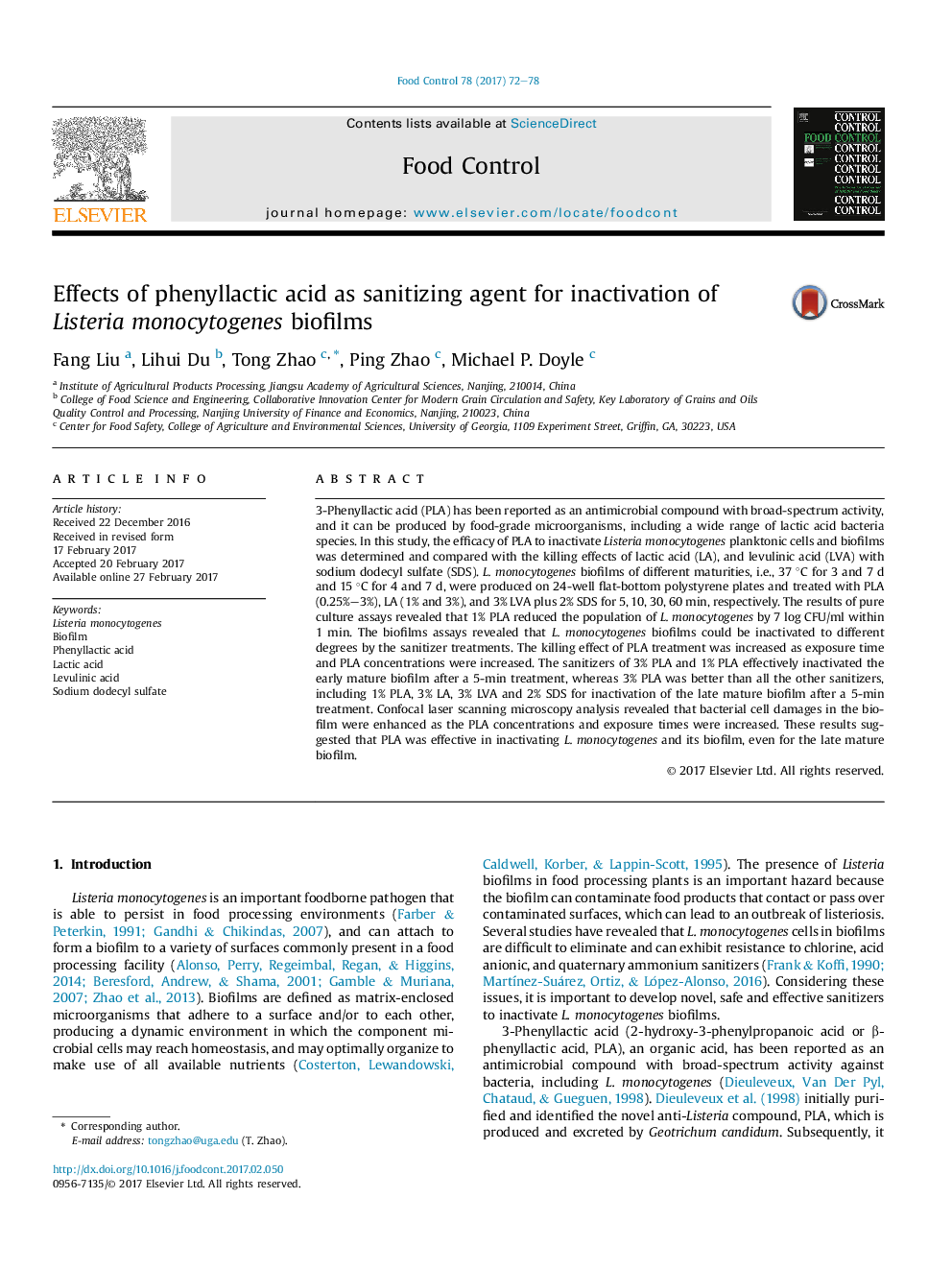| کد مقاله | کد نشریه | سال انتشار | مقاله انگلیسی | نسخه تمام متن |
|---|---|---|---|---|
| 5767489 | 1628386 | 2017 | 7 صفحه PDF | دانلود رایگان |

- Biofilm characteristics of L. monocytogenes with different maturity were evaluated.
- The efficacy of phenyllactic acid to inactivate L. monocytogenes in pure culture and biofilm was compared.
- The morphological changes treated by phenyllactic acid and other acids were observed.
3-Phenyllactic acid (PLA) has been reported as an antimicrobial compound with broad-spectrum activity, and it can be produced by food-grade microorganisms, including a wide range of lactic acid bacteria species. In this study, the efficacy of PLA to inactivate Listeria monocytogenes planktonic cells and biofilms was determined and compared with the killing effects of lactic acid (LA), and levulinic acid (LVA) with sodium dodecyl sulfate (SDS). L. monocytogenes biofilms of different maturities, i.e., 37 °C for 3 and 7 d and 15 °C for 4 and 7 d, were produced on 24-well flat-bottom polystyrene plates and treated with PLA (0.25%-3%), LA (1% and 3%), and 3% LVA plus 2% SDS for 5, 10, 30, 60 min, respectively. The results of pure culture assays revealed that 1% PLA reduced the population of L. monocytogenes by 7 log CFU/ml within 1 min. The biofilms assays revealed that L. monocytogenes biofilms could be inactivated to different degrees by the sanitizer treatments. The killing effect of PLA treatment was increased as exposure time and PLA concentrations were increased. The sanitizers of 3% PLA and 1% PLA effectively inactivated the early mature biofilm after a 5-min treatment, whereas 3% PLA was better than all the other sanitizers, including 1% PLA, 3% LA, 3% LVA and 2% SDS for inactivation of the late mature biofilm after a 5-min treatment. Confocal laser scanning microscopy analysis revealed that bacterial cell damages in the biofilm were enhanced as the PLA concentrations and exposure times were increased. These results suggested that PLA was effective in inactivating L. monocytogenes and its biofilm, even for the late mature biofilm.
Journal: Food Control - Volume 78, August 2017, Pages 72-78